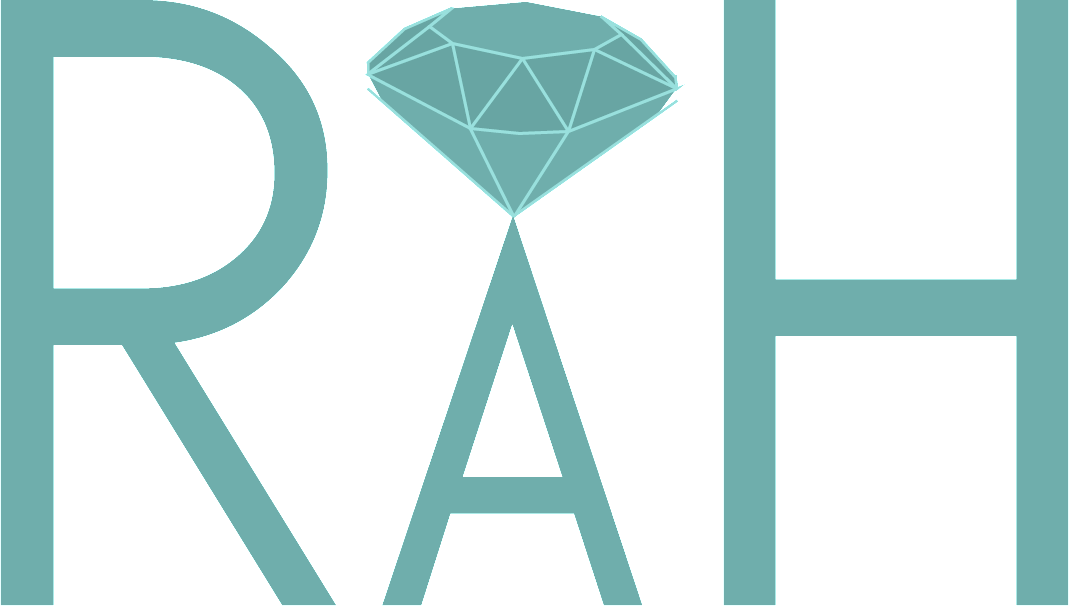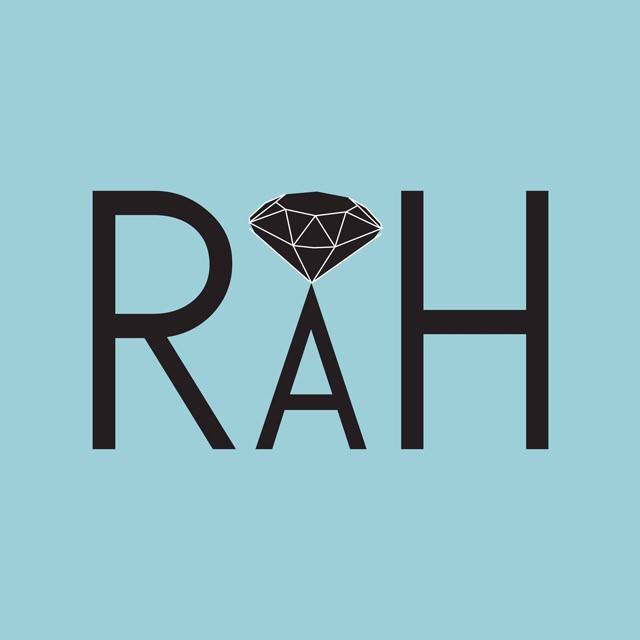
ความสะอาดของเพชร ตำหนิของเพชร Diamond Clarity วิธีเลือกตำหนิเพชร ที่เหมาะกับแหวนแต่งงาน
Diamond Clarity ตำหนิเพชร สำหรับแหวนแต่งงาน
Diamond Clarity ความสะอาดของเพชร คืออะไร
ก่อนที่จะซื้อ เพชรลูกค้า ควรทำความเข้าใจการประเมิณคุณภาพของเพชรแต่ละเม็ดก่อนตัดสินใจซื้อเพื่อสวมใส่ หรือลงทุน เพราะคุณภาพเพชรมีผลตอราคาเพชรโดยตรง โดยสากลการประเมิณคุณภาพเพชรมี อยู่ 4 หัวข้อหลัก 4Cs ได้แก่ Carat weight น้ำหนักของเพชร Color สีของเพชร Clarity ความสะอาดของเพชร และ Cut การเจียรนัยของเพชร ซึ่งลูกค้าบางคนอาจจะมองข้ามความสำคัญของ “Clarity ความสะอาดของเพชร” แต่อย่าลืมว่า C ทุกตัวใน 4C มีผลต่อราคาและความสวยของเพชร
Diamond Clarity ความสะอาดของเพชร คือการประเมิณความสะอาดของเพชรจากตำหนิหรือมลทิน ภายในเพชร และ ภายนอกที่พื้นผิวของเพชร ไม่ว่าจะเป็น ขนาด และ ปริมาณของตำหนิ, ตำแหน่งของตำหนิ, ชนิดและสีของตำหนิ
หากเพชรเม็ดไหนมีตำหนิน้อย หมายถึงเพชรเม็ดนั้นมีคุณภาพสูง
เกรดของความสะอาดเพชร Diamond Clarity Grade
สถาบัน GIA (Gemological Institute of America) ได้กำหนดมาตรฐานความสะอาดของเพชรไว้ดังนี้ (IF, FL, VVS1, VVS2, VS1, VS2, SI1, SI2, I1,I2,I3)
FL: Flawless เป็นเกรดสูงสุดของคุณภาพความสะอาดเพชร และราคาแพงที่สุด คือ เมื่อใช้กล้องขยายขนาด 10 เท่า ส่องเพชร นักวิเคราะห์อัญมณี ไม่สามารถสังเกต เห็นตำหนิ/มลทิน ทั้งภายในและภายนอกเพชร
IF: Internally Flawless คือ เมื่อใช้กล้องขยายขนาด 10 เท่า ส่องเพชร นักวิเคราะห์อัญมณี ไม่สามารถสังเกต เห็นตำหนิ/มลทิน ทั้งภายใน
VVS1: Very, Very Slightly Included 1 คือ เมื่อนักวิเคราะห์อัญมณี ใช้กล้องขยายขนาด 10 เท่า ส่องหาตำหนิเพชร จะมองหาตำหนิได้ยากมากๆ เพราะ ตำหนินั้นจะมีขนาดเล็กมากๆ หรือจะอยู่บริเวณขอบของเพชร หรือก้นเพชร.
VVS2: Very, Very Slightly Included 2 คือ เมื่อนักวิเคราะห์อัญมณี ใช้กล้องขยายขนาด 10 เท่า ส่องหาตำหนิเพชร จะมองหาตำหนิได้ยากมากๆ แต่สามารถหาได้ง่ายกว่า และใช้เวลาหาน้อยกว่า VVS1 แต่ก็ยังหาได้ยากมากๆอยู่ดี. (เพชรที่มีคุณภาพความสะอาดเท่ากับ VVS1 และ VVS2 ยังเป็นเพชรที่ High quality grade)
VS1: Very Slightly Included 1 คือ เมื่อนักวิเคราะห์อัญมณี ใช้กล้องขยายขนาด 10 เท่า ส่องหาตำหนิเพชร จะมองหาตำหนิได้ยากมาก แต่สามารถหาได้ง่ายกว่า และใช้เวลาหาน้อยกว่า VVS แต่ก็ยังหาได้ยากมากอยู่ดี หรือบางทีอาจจะมีตำหนิเล็กอยู่ตำแหน่งด้านก้นของเพชร (Pavilion) ไม่สามารถสังเกตุเห็นตำหนิได้ด้วยตาเปล่า.
VS2: Very Slightly Included 2 คือเมื่อนักวิเคราะห์อัญมณี ใช้กล้องขยายขนาด 10 เท่า ส่องหาตำหนิเพชร จะมองหาตำหนิได้ยากมาก แต่สามารถหาได้ง่ายกว่า และใช้เวลาหาน้อยกว่า VS1 แต่ก็ยังหาได้ยากมากอยู่ดี หรือบางทีอาจจะมีตำหนิเล็กอยู่ตำแหน่งด้านบนของเพชร (Crown) ไม่สามารถสังเกตุเห็นตำหนิได้ด้วยตาเปล่า.
SI1 and SI2: Slightly Included 1 and Slightly Included 2 คือเมื่อนักวิเคราะห์อัญมณี ใช้กล้องขยายขนาด 10 เท่า ส่องหาตำหนิเพชร จะมองหาตำหนิได้ง่าย หรือสามารถสักเกตุเห็นตำหนิได้ด้วยตาเปล่า.
I1 I2 and I3: Included 1,2 and 3 สามารถสักเกตุเห็นตำหนิได้ง่ายด้วยตาเปล่า.
เกรดความสะอาดของเพชรมีผลต่อราคาเพชรเป็นอย่างมาก เพชรเกรดยิ่งสูงยิ่งราคาแพง เพราะหาได้ยาก และ มีความสวย มากกว่าเกรดที่ต่ำกว่า
ในการเลือกเพชร สิ่งสำคัญคือต้องพิจารณาความชอบส่วนตัวและงบประมาณของคุณ หากคุณกำลังมองหาเพชรที่มีความใสเป็นเลิศ การพิจารณาเพชรที่มีเกรดความใสสูงกว่า เช่น “VS” หรือ “VVS” จะดีที่สุด ในทางกลับกัน หากคุณกำลังมองหาเพชรที่มีราคาต่ำกว่า เพชร “SI” อาจเป็นตัวเลือกที่ดีในการพิจารณา ไม่ว่าคุณจะเลือกแบบใด สิ่งสำคัญคือต้องตรวจสอบเพชรอย่างใกล้ชิดและเลือกเกรดความใสที่เหมาะสมกับความต้องการและงบประมาณของคุณมากที่สุด และต้องให้ความสำคัญในการช่างน้ำหนักของ 4CS ตัวอื่นด้วย
ชนิดของตำหนิเพชร
ตำหนิ/มลทินภายในและตำหนิภายนอกของเพชร(Inclusions and Blemishes) มีหลายชนิด บางชนิดเกิดขึ้นโดยธรรมชาติ และบางชนิดเกิดจากการกระทำของมนุษย์ เช่นการเจียรนัย และการจัดเก็บที่ไม่ดี ตัวอย่างตำหนิที่พบบ่อบในเพชรมีดังนี้
Crystals: คือผลึกของแร่ธาตุชนิดอื่นที่เจือปนอยู่ภายในเพชร ตำหนิ/มลทินชนิดนี้ มีรูปผลึกได้หลายแบบ หลายขนาด และอาจจะ มีสีขาว สีดำ หรือไม่มีสี เลย คนไทยบางคนเรียกตำหนิชนิดนี้ว่าใฝขาวหรือใฝดำตามสี
Feathers: ตำหนิ/มลทิน “ขนนก” เป็นร้าวธรรมชาติเล็กๆ ด้านในเพชรที่เกิดจากกระบวกการกำเนิดเพชร หรือ เกิดจากการเปลี่ยนแปลงอุณหภูมิและความดันโดยฉับพลันของภาพแวดล้อมพี่พชรเม็ดนั้นอยู่
Pinpoints: ตำหนิ/มลทิน “แบบจุด” เป็นจุดเล็กๆที่อยู่ในเพชร สังเกตได้ยากมากๆ อยาจจะเป็นฟองอากาศ หรือเศษธาตุอื่น จะสังเกตุได้เมื่อใช้กล้องขยายเท่านั้น
Clouds: ตำหนิ/มลทิน “แบบก้อนเมฆ” คือการรวมกลุ่มกัน ของตำหนิ/มลทิน “แบบจุด” หลายๆจุดใยบริเวณเดียวกัน
Needles: ตำหนิ/มลทิน “รูปเข็ม” อยู่ภายในเพชร มีลักษณะเหมือนเข็ม อาจจะมีสีขาวหรือไม่มีสี เกิดจากกระบวนการก่อตัวของเพชรโดยธรรมชาติ
Knots: คือผลึกของแร่ธาตุชนิดอื่นที่เจือปนอยู่ที่พื้นผิวเพชร
Scratches: รอบขนแมวที่พื้นผิวของเพชร
Nicks: รอยหยักเล็กๆ บนขอบหรือมุมของเพชรซึ่งเกิดจากการสึกกร่อนหรือความเสียหาย
Polish lines: คือร่องหรือเส้นเล็กๆ บนผิวเพชร ซึ่งเกิดจากกระบวนการขัดเงาของเพชร
Pits: รูเล็กๆ บนพื้นผิวของเพชรที่เกิดจากความเสียหายหรือตำหนิตามธรรมชาติ
Surface grain lines: เส้นเล็กๆไม่มีสีบนพื้นผิวของเพชรซึ่งเกิดจากโครงสร้างผลึกของเพชร
Extra facets: หน้าเหลี่ยมเพิ่มเติมที่เจียระไนบนผิวของเพชร
แหวนแต่งงาน แหวนหมั้น ควรเลือกเพชรความสะอาดระดับไหน?
Flawless หรือ Internally Flawless: เพชรที่มีระดับความสะอาดระดับ “Flawless” หรือ “Internal Flawless” ไม่มีตำหนิหรือตำหนิที่มองเห็นได้ และมีความสะอาดสูงสุดเท่าที่มี เพชรเหล่านี้มีราคาแพงที่สุด แต่เหมาะสำหรับผู้ที่ต้องการเพชรคุณภาพดีที่สุดสำหรับแหวนหมั้น และ ต้องการเก็บเป็นของสะสม
VVS1 หรือ VVS2: เพชรที่มีระดับความสะอาด ระดับนี้เป็นเป็นที่มีคุณภาพสูงมาก มีตำหนิน้อยมากๆ แต่ราคาค่อนข้างสูง จำเป็นที่นิยมน้อยกว่า ระดับ VS
VS1 หรือ VS2: เพชรที่มีระดับความสะอาด ระดับนี้เป็นเป็นที่มีคุณภาพสูง มีตำหนิน้อย ที่สำคัญไม่สามารถมองไม่เห็นด้วยตาเปล่า เพชรเหล่านี้ยังมีราคาย่อมเยากว่า VVS และ IF FL อยู่มาก ถือเป็นตัวเลือกที่นิยมที่สุดสำหรับแหวนหมั้น
SI1 หรือ SI2: มีรอยตำหนิที่เห็นได้ด้วยตาเปล่า แต่ต้องทำการสังเกตใกล้ ตัวเลือกนี้จึงเหมาะกับผู้ต่องการเพชรเม็ดใหญ่ ในงบประมาณที่จำกัด
เกรดความสะอาดที่ดีที่สุดสำหรับ แหวนหมั้น แหวนแต่งงาน แหวนเจ้าสาว นั้นขึ้นอยู่กับความชอบส่วนตัวและงบประมาณของเจ้าสาวแต่ละคน สิ่งสำคัญคือต้องเลือกเกรดความใสที่เหมาะกับความต้องการของคุณและทำให้คุณพอใจ โปรดจำไว้ว่าลักษณะที่สำคัญที่สุดของแหวนหมั้นคือความสำคัญทางอารมณ์และความรักที่เป็นสัญลักษณ์ ไม่ใช่ระดับความใสของเพชร
ดังนี้ การเข้าใจความสะอาดของเพชรเป็นสิ่งสำคัญที่ลูกค้า ควรทำความเข้าใจก่อนซื้อเพชร เพราะใจความสะอาดของเพชรส่งผลต่อความสวยและมูลค่าของเพชร เมื่อพิจารณาความสะอาดของเพชรร่วมกับ 4 Cs อื่น ๆ ผู้ซื้อสามารถตัดสินใจ ซื้อเพชรได้ตรงกับความต้องการของตนเองจริงๆ
Diamond Clarity:
Understanding the Importance and Value of Inclusions and Blemishes
When it comes to buying a diamond, understanding its quality is essential to making a wise investment. Among the Four Cs of diamond quality – carat weight, color, cut, and clarity – clarity can often be the most overlooked. However, it is a crucial factor that can impact both the appearance and value of a diamond.
The 4 Cs of Diamond Quality
To understand the importance of diamond clarity, it’s essential to first understand the Four Cs. The Four Cs are the most used standard for evaluating diamond quality. They include carat weight, color, cut, and clarity. Each of these factors plays a significant role in determining the value and quality of a diamond. However, diamond clarity often gets overlooked.
The Importance of Diamond Clarity
Diamond clarity refers to the presence of inclusions and blemishes in a diamond. Inclusions are internal flaws, while blemishes are external imperfections. The fewer inclusions and blemishes a diamond has, the higher its clarity grade, and the more valuable it becomes. This is because a diamond with high clarity appears more brilliant and sparkly to the naked eye, making it more desirable to buyers.
The Diamond Clarity Scale by The Gemological Institute of America (GIA): The scale ranges from flawless to included, with several grades in between. The grades include:
FL: Flawless. A FL diamond is also free of any visible inclusions under 10x magnification, but it is even rarer than an IF diamond, as it has no visible blemishes or marks on its surface when viewed under 10x magnification.
IF: Internally Flawless. This is the highest clarity grade for a diamond, and it means that the diamond has no visible inclusions when viewed under 10x magnification. An IF diamond has no inclusions that are visible under magnification, and only minor blemishes may be present on the surface.
VVS1: Very, Very Slightly Included 1. This clarity grade means that the diamond has very small inclusions that are extremely difficult to see under 10x magnification, and they are usually located on or near the edge of the diamond. These inclusions may be visible from the pavilion, or bottom of the diamond.
VVS2: Very, Very Slightly Included 2. This clarity grade means that the diamond has very small inclusions that are slightly more visible than those in a VVS1 diamond, but still very difficult to see under 10x magnification. The inclusions in a VVS2 diamond may be located at the edge of the diamond, or they may be slightly visible from the crown or top of the diamond.
VS1: Very Slightly Included 1. This clarity grade means that the diamond has small inclusions that are visible under 10x magnification, but they are difficult to see without magnification. The inclusions in a VS1 diamond are usually located in the pavilion, or bottom of the diamond, and they are generally not visible from the crown or top of the diamond.
VS2: Very Slightly Included 2. This clarity grade means that the diamond has slightly larger and more visible inclusions than a VS1 diamond, but they are still relatively small and difficult to see without
magnification. The inclusions in a VS2 diamond are generally located in the pavilion, and they may be slightly visible from the crown.
SI1 and SI2: Slightly Included 1 and Slightly Included These diamonds have noticeable inclusions that are visible to the naked eye under normal lighting conditions.
I1 I2 and I3: Included 1,2 and 3 and Slightly Included These diamonds have noticeable inclusions that are visible to the naked eye under normal lighting conditions.
Inclusions and blemishes can impact a diamond’s clarity grade. Inclusions can range from clouds, feathers, and pinpoints, to crystals, needles, and knots. Blemishes can range from scratches and nicks to chips and cavities. Depending on their size, location, and number, inclusions and blemishes can significantly affect a diamond’s appearance.
inclusions in diamonds can take various forms, such as:
Crystals: These are small mineral deposits that are present within the diamond. Crystals can be black, white, or colored, and they can have different shapes and sizes.
Feathers: These are cracks or fractures that resemble the appearance of feathers within the diamond. Feathers can occur naturally or due to external pressure or heat.
Clouds: These are clusters of small inclusions that can make the diamond appear cloudy or hazy. Clouds are often not visible to the naked eye but can affect the diamond’s clarity under magnification.
Pinpoints: These are tiny dots that can be black, white, or colored, and can be present within the diamond. Pinpoints are usually only visible under magnification.
Needles: These are thin, needle-like inclusions that are often white or transparent and can appear singly or in clusters. Needles can be caused by crystal growth or distortion.
Knots: These are inclusions that are located at or near the surface of the diamond. They occur when a diamond crystal grows close to the surface of the rough diamond, and the surface of the diamond crystal breaks.
Scratches: These are marks or lines on the surface of the diamond caused by wear or mishandling.
Nicks: These are small chips or notches on the edges or corners of the diamond caused by wear or damage.
Polish lines: These are small grooves or lines on the surface of the diamond caused by the polishing process.
Pits: These are small indentations or holes on the surface of the diamond caused by damage or natural inclusions.
Surface grain lines: These are microscopic lines on the surface of the diamond caused by the diamond’s crystal structure.
Extra facets: These are additional facets that are cut into the diamond’s surface. They are not necessarily considered blemishes unless they affect the symmetry of the diamond.
which one is good for engagement ring?
The best clarity grade for an engagement ring depends on personal preference and budget. Here are a few options to consider:
VS1 or VS2: Diamonds with a clarity grade of “VS1” or “VS2” offer excellent clarity and are ideal for those who want a high-quality diamond with minimal inclusions. These diamonds are still affordable and are a great choice for an engagement ring.
SI1 or SI2: Diamonds with a clarity grade of “SI1” or “SI2” are slightly included and have noticeable inclusions or blemishes, but they are still a good option for an engagement ring. These diamonds offer a good balance between clarity and affordability and are a popular choice for many people.
Flawless or Internally Flawless: Diamonds with a clarity grade of “Flawless” or “Internally Flawless” have no visible inclusions or blemishes and offer the highest clarity available. These diamonds are more expensive, but they are ideal for those who want the best quality diamond for their engagement ring.
Ultimately, the best clarity grade for an engagement ring depends on your personal preferences and budget. It is important to choose a clarity grade that suits your needs and makes you happy. Remember that the most important aspect of an engagement ring is the emotional significance and the love it symbolizes, not the clarity grade of the diamond.
In conclusion, understanding diamond clarity is essential when buying a diamond. It can impact both the diamond’s appearance and its value. By considering the diamond’s clarity in combination with the other Four Cs, buyers can make an informed decision when selecting a diamond. The importance of diamond clarity cannot be overstated, as it is a crucial factor in determining the overall quality and value of a diamond.



